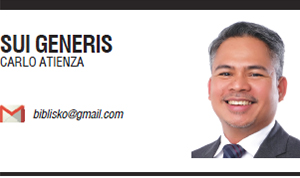
EVEN when people were still working in traditional offices, there have been countless times when an e-mail could have been answered expediently with a phone call, or times when people endured a meeting which could have just been an e-mail. But in a work-from-home setup, this problem is exacerbated by new communication technologies which allow people to shoot an instant message rather than call or e-mail or meet when it could have been settled by an instant message.
These instances add to the fatigue and stress of the pandemic and the daily struggle of work-life balance in the age of remote work. Face-to-face meetings are still the best way of communication because a significant amount of communication comes from nonverbal cues. But with the pandemic, we have resorted to other means of communication which lessens face-to-face interactions. And with the absence of nonverbal cues, how do we know if we need to meet, call, e-mail, or instant message?
You need to call for a meeting when you need to explain context and avoid miscommunication especially when the consensus of a group is needed to move forward. A meeting is particularly effective when you need to come up with a plan or collaborate on a new project, or when you anticipate you have a higher risk of being misinterpreted or there is the strong possibility of a lot of follow-up questions. A meeting is a good venue to explain context and how each participant can contribute to the success of the meeting’s objective. If there are multiple participants and if a consensus is needed to move forward, you need to call for a meeting.
Meetings are also necessary for managing a team and keeping people aligned in terms of what the office needs to accomplish. Moreso during the initial stages of team development, when members need to get to know each other and find their niche in the group. Once these are in place, meetings can be lessened or shortened.
Before calling for a meeting, make sure participants know their expected contribution to the meeting. And to ensure that everybody prepares, have everyone present.
But when you need specific information and what you need can be resolved in two minutes or less, call the person. This is highly effective when the information you need is important to move forward with your work. For ongoing projects, a personal call is helpful to provide a personal touch as well as provide enough context why you need the information.
When you call, use their work phone numbers rather than their personal numbers. Avoid using their personal line unless you have explicit permission to call them there. A phone call can also be used to follow-up on urgent information. As much as possible, ask permission if you can call. Note that in a traditional office setting, people are obligated to answer the work phone when it rings. In a work-from-home setup, people might only have their personal mobile number. So, be prudent on when you can call people on their personal line.
E-mail is effective when providing guidance and needed information to a group of people. It is also helpful as documentation of what has been agreed on, and to provide a brief status of ongoing projects or programs to a group of people. Make sure that the requested information in an e-mail is not time sensitive as e-mails tend to be read within the day. You can also use e-mail to forward memos and links to outside sources for information dissemination.
However, do not use e-mail when information is emotionally charged or when you know that the information you send out is prone to be misconstrued or open to multiple interpretations, as in the case of changes in the composition of the team. Moreso when the topic of the e-mail is complicated and requires lengthy explanations. It is also highly recommended to do face-to-face conversations for confidential matters rather than e-mails as these can be forwarded.
When using e-mail, make sure the subject heading is searchable later and begin with what you want the recipient to do. As with most e-mails, the action plan required from the recipient is at the bottom. Start with the action required and then explain the context after so that the recipient can assess. With the amount of e-mail people receive daily, your request can stand a fighting chance with a searchable subject heading and a lead with a brief action required from the recipient.
Keep your e-mail short and direct to the point. Avoid using the “Reply to All” button unless the information you will share is one needed by all. Keep people who need to reply in the “To:” field and keep people who need to be in the loop without needing to reply in the “CC:” field. And when the e-mail thread has become circuitous and several issues have come up, it would be best to call for a meeting with an agenda for the raised issues.
Instant messages used to be looked down on as a form of communication, as it tends to be informal and too personal. However, office communication has necessitated the need for this form of communication, mostly when quick and specific information is needed. Of course, this all depends on the office culture and what are acceptable means of communication using instant messaging.
You can use it when you need information
which is vital to move forward with your work. An example is to use it for verifying logistics especially during an event and for faster relay of information. You can also use it when both of you are in the same meeting but want to keep your conversation private. This is especially helpful when you are only an observer to the meeting, and you course your comment through your manager. However, be warned that this causes divided attention which can be counterproductive if left unchecked. Limit questions in instant messaging to at most three messages. If it goes beyond that, you might want to call, or request for a meeting.
Technology is a tool that helps us work smartly if we use it appropriately. As it is, we are becoming more enslaved to convenience more than using technology to make our lives better. And like any other tool, we must use them wisely and prudently.
Image credits: usineeoffashion.com
Read full article on BusinessMirror



